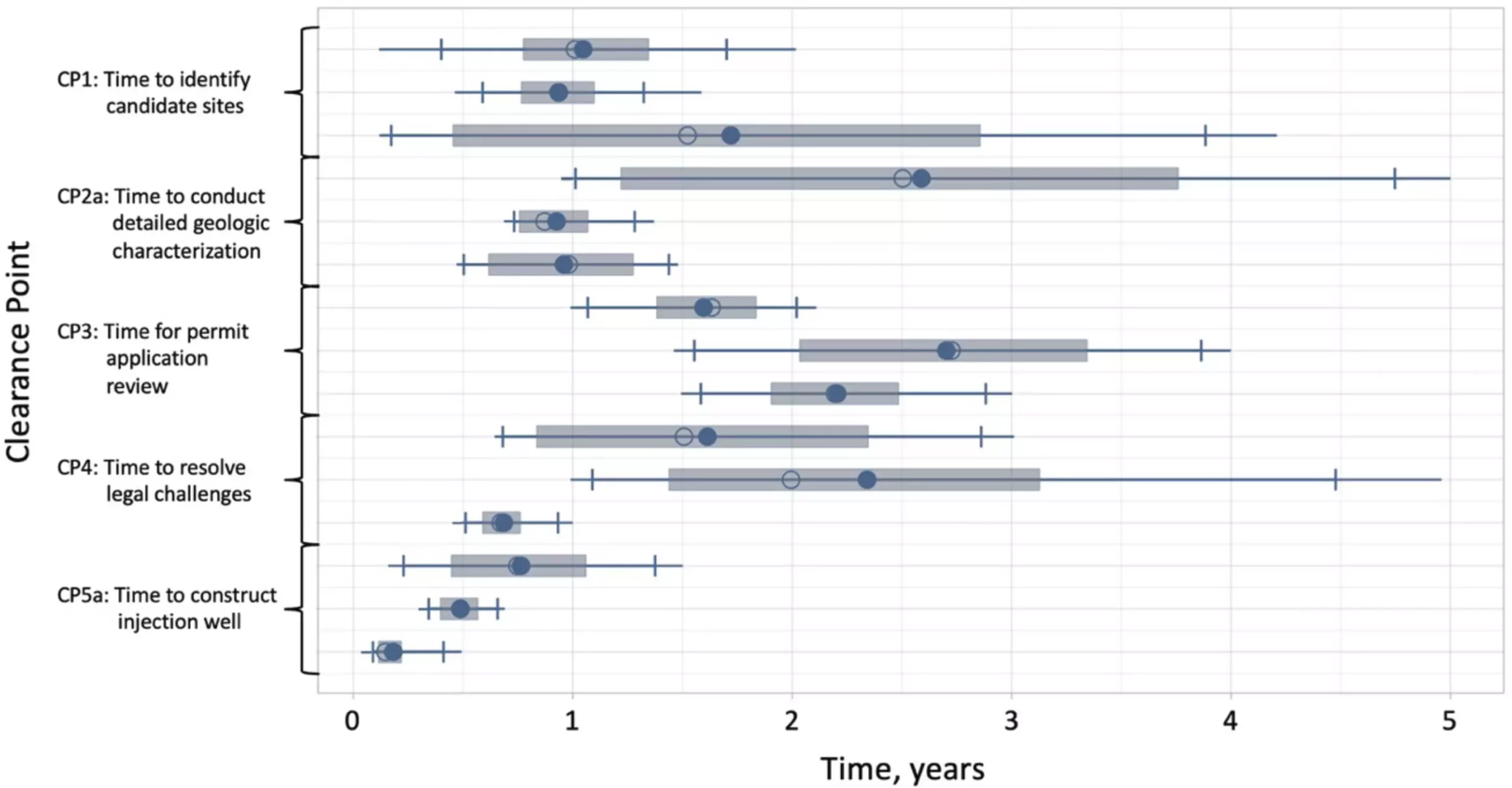Carbon capture and sequestration (CCS) is a key solution in reducing carbon dioxide (CO2) emissions and mitigating the impacts of climate change. However, the development and implementation of geologic sequestration sites face numerous barriers. Researchers from Carnegie Mellon University’s Department of Engineering and Public Policy (EPP) have conducted a study to estimate the time required for these sites to become operational and propose strategies to expedite the process.
The study identifies six clearance points that determine the timeline for a geologic sequestration site to be approved and implemented. These points include finding suitable site(s), preparing the selected site, obtaining Environmental Protection Agency (EPA) approval, resolving any legal challenges, constructing wells and pipelines, and obtaining injection authorization.
To estimate the time required for each clearance point, the researchers used expert judgments in a simulation framework. The findings, published in the Proceedings of the National Academy of Sciences, indicate that the average time required for a site to become operational is between 5.5 and 9.6 years, with an upper limit of 12 years. Even with optimistic expert judgments, the lower limit is 2.7 years, which may still hinder progress towards the nation’s 2050 climate goals.
The timeframe estimates highlight the need to expedite the process if CCS is to make a meaningful impact. The Section 45Q CCS tax credit under the Inflation Reduction Act, which expires in 2032, further emphasizes the urgency for quicker site utilization. To address this challenge, the researchers propose seven recommendations.
The study identifies pore space acquisition, the Class VI permit application review process, and potential litigation as the most significant non-technical delays in the development of geologic sequestration sites. The recommendations aim to overcome these obstacles and expedite the permitting process.
One recommendation involves granting states primacy, similar to North Dakota and Wyoming. Primacy allows states to expedite their application process and could significantly reduce delays. Legislative efforts might be necessary to facilitate this approach.
To mitigate the risk of prolonged delays due to legal challenges, the researchers suggest engaging the public and treating landowners as vital stakeholders. Prioritize public acceptance by proactively addressing concerns and fostering open dialogue. Developing legal frameworks that minimize litigation can also contribute to a smoother and faster approval process.
The researchers acknowledge that public acceptance and comprehensive legal frameworks play crucial roles in the successful deployment of emerging technologies like CCS. The previous work conducted by Carnegie Mellon University’s team on deep subsurface ownership, experience-based learning, and long-term stewardship and liability has shown the importance of a holistic approach.
Over a decade ago, Carnegie Mellon University led a team of experts to address key issues related to CCS. However, the decarbonization of the energy system was not a priority, resulting in a fragmented and state-focused approach to addressing the problem. To achieve meaningful progress, comprehensive policies need to be implemented to streamline the development and approval of geologic sequestration sites across the nation.
The development and implementation of geologic sequestration sites for carbon capture and sequestration face significant challenges. The time required for a site to become operational ranges from 2.7 to 12 years, highlighting the need for expediency in achieving the nation’s climate goals. By implementing recommendations such as granting primacy to states and engaging communities, the process can be accelerated. Comprehensive policies are necessary to ensure the successful deployment of carbon capture and sequestration and its contribution to decarbonizing the U.S. economy.


Leave a Reply